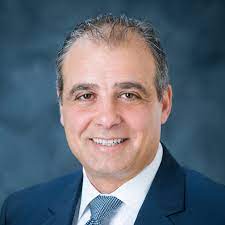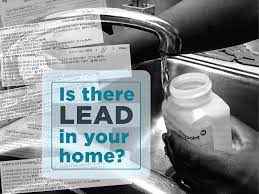On Thursday, county and city officials flocked to Capitol to check if the Mississippi Infrastructure Modernization Act would give them the funds needed to address local needs. These included deficient county bridges and pothole-ridden streets as well as aged water and sewer systems. Trey Lamar (R-Senatobia), House Ways and Means Vice Chairman, stated that “I think this piece legislation goes a long distance to address the problem” in relation to local government infrastructure problems. Some were concerned that the bill which allocates funding partly based on the population of a community wouldn’t be enough to assist poorer areas and counties in the Delta, which are dealing with declining populations, was too narrow. “It is a beginning, but it’s not a panacea,” Rep. Kabir Karriem (D-Columbus) said during the House floor debate. The House passed the part of the plan that helps local governments by an overwhelming 108-5 vote. It was expected that the Senate would pass it Friday by a similar margin. Gov. Phil Bryant, House speaker Philip Gunn, and Lt. Governor. Tate Reeves appeared to be moving slowly, but surely, through the legislative process. The transportation legislation will require at least two days for legislators to complete. The Senate was still discussing the controversial aspect of the plan late Thursday, which included enacting a lotto and using the revenue to fund transportation. The Senate will continue to debate the transportation plan Friday. It would generate approximately $200 million annually. The plan would generate about $200 million annually. Half of the revenue would go to the state highway system, and the other half to local government needs. This includes repairs to nearly 500 county bridges that were closed due safety concerns. The plan’s major components included a lottery with revenue going to the state highway system and diversion of tax revenue from education, healthcare, and other state services to local infrastructure needs. The use tax is a 7. percent tax on all retail items that are purchased outside of the state, including online sales. The bill also included the issue of $300 million of debt. This will be paid off by a tax on casino that has been levied over the years to fund transportation improvements. 250 million of the $300 million in bonds would be held in a fund managed by the Department of Transportation. This fund will cover “emergency transport needs” at both the local and state levels. Original plans by the House leadership were to reserve $50 million for bonds for “special project” or earmarks. The full House voted narrowly to split the $50 million evenly among all 82 counties. Rep. William Tracy Arnold (R-Booneville) joked that “if we are going to serve pork on the House Floor, shouldn’t everyone be included?” But the diversion from the use tax revenue will have the greatest and longest lasting impact on local governments. The plan would see 35 percent of the revenue from use taxes (roughly $120 million per year, according to current numbers) be diverted from the state programs to local governments. Some local leaders are concerned about how this money is distributed among the communities. The current bill divides money based on the town’s population and its contribution to the total state sales tax each fiscal year. This plan ensures that towns with steady or increasing populations receive a steady flow of funding. Many Mississippi towns, especially those in the Delta region, have seen rapid population declines over recent years. Greenville, with a population close to 50,000 in 1990, is now home to just 33,000. However, the infrastructure and roads it needs to keep them running have not changed. “I support any bill that gives us more money, because we need it more. Errick Simmons, Greenville mayor, stated that the bill is flawed. “There is no correlation between repairing these crumbling streets and the population and the sales tax in those cities and towns.” “We are trying to repair and address the infrastructure we addressed in 1985, when we had a large population and a declining population.” The bill will be fully enacted in four year’s time. At least $20 million would go to county bridges. About $50 million would go to each of the localities and counties. This means that local officials have something new: budget predictability. Executive director of the Mississippi Association of Supervisors Derrick Surrette said that predictability and the fact that funds are transferred directly from the Department of Revenue to the counties is the reason he supports the legislation. You can’t build bridges in a day. It takes planning. Surrette stated that a county can plan for additional funds if they know they have it coming in. It’s not possible to budget for it right now, as it was in the past. You didn’t know what was coming and it had to be appropriated. We need a steady and predictable stream of revenue. This bill does that. To receive their full allocations, counties would have spend the same amount as they currently spend on roads and bridges. Municipalities would have to spend at least the average amount of the last 10 years. Lamar stated that the intention of the language was to stop local governments using new state funds to replace local transportation funds. When fully enacted, Jackson would receive $4.34million annually in funds while Hinds would get $1.84million. The Mississippi Infrastructure Modernization Act would also label the plan as a money transfer plan. This would allow smaller amounts of money to go to transportation needs such as the $5 to $15 million per year expected to be generated from sports betting which many Mississippi casinos now allow. To support this important work, you can make a regular donation to the Spring Member Drive today.










